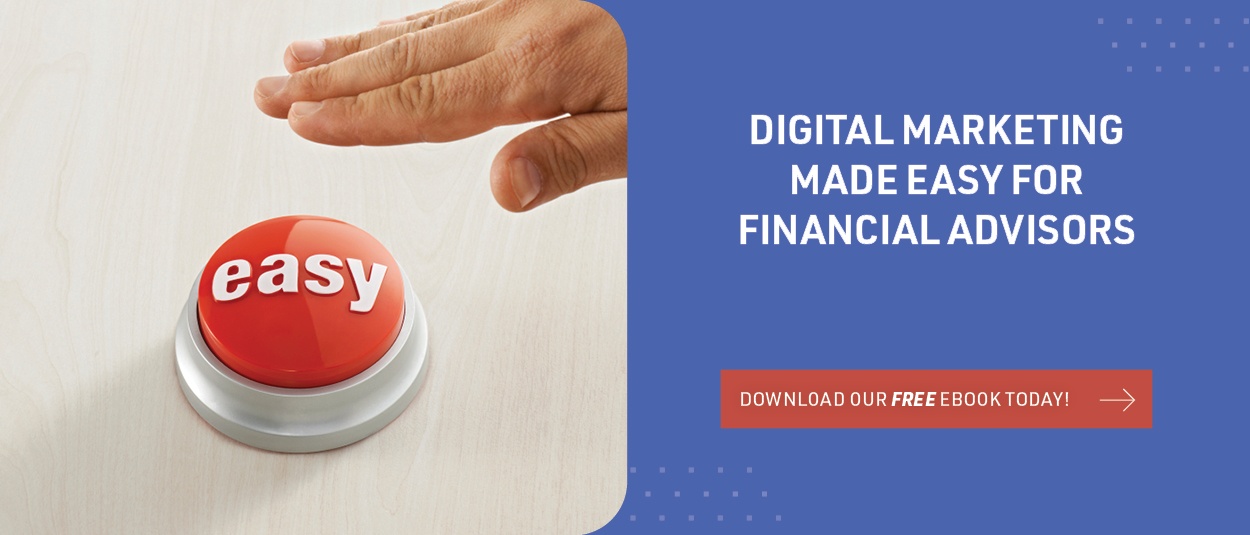

7 Keys To The Best Email Marketing For Financial Advisors
Your perception may already be that the financial advisors with the best sales skills and marketing strategies are responsible for the most assets. This makes perfect sense for three core reasons.
First, most investors do not know how to determine the quality of financial advisors so they select the advisors they “like” the best. When this subjective process occurs, there is a good chance investors will select the advisors with the best personalities and/or sales skills.
Second, it is a lot easier to control your financial advisor marketing tactics than it is the results of your portfolio management services. This may be why the biggest firms also have the best marketing organizations and tactics.
And third, a high percentage of financial advisors are better at planning and investing than they are marketing. In many cases, they do not even view marketing as a good use of their time.
This article will cover 7 topics about financial advisor email marketing that will provide what you need to know to make email marketing a major source for new prospects and revenue producing clients:
- How can email do more of the marketing for you?
- What are the top 3 goals for your email marketing campaigns?
- How does your website impact your email marketing results?
- Which email marketing campaigns work the best?
- What to avoid when you use email marketing?
- Why do sequenced emails produce better results?
- How can you expand your email marketing lists?
How can email do more of the marketing for you?
If you are using email marketing, you already have the investors’ contact information. There is a good chance they registered with you to obtain a free offer of some kind. But, they did not contact you to schedule an interview. They aren’t ready to do that quite yet.
Your goal for email marketing is to keep your name in front of investors so they contact you when they are ready to start interviewing financial advisors.
Email marketing is definitely an effective way to stay in touch with leads that are not ready to interview advisors.
Email marketing can also be used to develop a predisposition that creates competitive advantage for financial advisors who have a top notch email marketing strategy.
This predisposition can be a major source for competitive advantage. Sure, the investors may interview four or five advisors, but they may know you better than the other advisors. This “relationship” can have a major impact on your marketing results.
What are the top 3 goals for your email marketing campaigns?
In an ideal world, your email marketing campaign is going to achieve three goals.
First, is to develop rapport with investors. Perhaps you send them occasional surveys to learn more about their concerns, current circumstances, and goals. The more you take an interest in them, the higher the probability they will contact you when they are ready to interview financial advisors (they already know you).
Second, is the credibility you have created by displaying your expertise in your emails. This is big because investors are seeking experts who can help them achieve their financial goals.
Third may be the most important feature of your email marketing strategy. It is the trust that is developed over time. And, you already know money moves on trust.
All three are important and all three are sources of competitive advantage.
The more competitive advantage you produce with your email marketing efforts the higher the probability you will win in competitive situations.
How does your website impact your email marketing results?
If they are on your email marketing list, investors have already found you, and you have their contact information.
You know them and they know you - at least enough to share contact information. What’s important is where you go from here.
Besides finding financial advisors, the next major application for investors is learning more about advisors before they contact or select them.
Our surveys show 82% of investors will visit financial advisor websites to learn more about them. They have three reasons for conducting their online research. It impacts who they: Contact, interview, and select.
This makes a website a critical link in the sales funnels of financial advisors.
Which email marketing campaigns work the best?
One tip right up front. A best practice is not a generic newsletter that provides a lot of bland, financial information that may or may not have anything to do with the interests and circumstances of the investors on your drip list(s).
Instead, the best campaigns have highly relevant information that speaks to their current circumstances, concerns, and goals. This could mean you may have several lists that target investors with different characteristics, situations, and interests.
The more relevant the content the more frequent the emails can be. Monthly or bi-monthly are the two norms.
Technology is now available to schedule emails ahead of time. Use email scheduling tools such as HubSpot and you will be able to plan the content you would like to send, ensuring your messages are sent to the targeted parties in a consistent timeline controlled by you.
Invest a couple of hours each month planning your email messages, let the automated tools do the work on your behalf and you will be free to focus on other work. This approach is optimal as it ensures your target clients receive messages at specific times, increases the chances that they will click on them, heed your call-to-action and move further down the sales funnel.
The email messages should be sent from the same person every time. Otherwise, you run the risk of confusing your target markets. Confusion works against you. Consistency works for you.
Relying on one party to send the messages to those on your email list ensures the recipients become familiar with that individual’s name and email address. This familiarity increases the chances your financial advisor emails will be opened and read - recipients know what to expect.
Building a drip list means it is imperative your financial advisor website has a lead capture form. The best approach is to provide prospective clients with something of value for giving up their anonymity and submitting their contact information. Examples include:
- Whitepapers
- eBooks
- Webinars
- Other video content
Providing online visitors who sign up for your email list with something of value helps move them through the sales funnel and increase your conversion rate. You give them a free eBook. They give you their contact information.
What to avoid when you use email marketing?
When your goal is building rapport, credibility, and trust you cannot afford to be too promotional. That could turn-off a portion of the investors on your email marketing list.
You should also minimize the use of investment jargon in your emails. Investors rarely hire advisors who provide confusing information. They are thinking ahead to service meetings that could be equally confusing.
Keep in mind, most people will not commit the time to read more than a few hundred words. In fact, most people start scanning headings after the first 200 words. Resist the temptation to overwhelm your target audience with too much information. When you are more concise, your drip emails will have greater impact.
Why do sequenced emails produce better results?
An example of a successful email marketing campaign starts with an email that describes the importance of taking a certain action - for example, saving more money for one’s golden years. The next email describes why save more? The answer might be rising longevity due to medical science and healthier lifestyles. This email may also provide access to a retirement eBook that does not require registration because you already have the investors’ contact information..
A follow-up email message builds on the first two by providing additional information about their subject matter. As an example, this third message might provide information about the sources of erosion of retirement savings - inflation, investment expenses, taxes.
The final email message is a capstone of sorts in which the financial advisor transmits a link to a case study that describes how your firm has helped other clients solve retirement challenges.
The sequence of emails is designed to establish you as an expert in your field. Trust and expertise are the two most important elements when investors select financial advisors who will influence or control the investment of their retirement assets.
A sequence of emails creates a sense of continuity that persuades the email recipient to begin thinking about the financial advisory firm’s value offering. By the time the target client receives the final message with the link to the company’s site, he or she really is that much more likely to click on it and convert from being a lead (you have their contact information) to an active prospect (there is contact with mutual interest).
What actions do you want investors to take?
Convincing a targeted investor to take one of these actions converts them from a visitor on the website or a name on an email list into an active prospect with the potential to become a revenue producing client.
What is the best way to expand your email marketing lists?
When you recognize the extraordinary value that is produced by email marketing your first question might be: “How do I reach more investors?”
The low hanging fruit is to add more free offers on your website that encourage visitors to register to get them.
You could supplement your SEO (Search Engine Optimization) with SEM (Search Engine Marketing; paid advertising campaigns) to add more names to your drip list. Ideally, this effort will produce enough active leads to justify the advertising expense.
Editors note: This post was originally published in 2020 and has been completely revamped and updated for accuracy and comprehensiveness.

Debbie Freeman
Search Here
Categories
- AI (18)
- blogging (2)
- branding (1)
- content (12)
- custodians (1)
- Digital (345)
- email marketing (3)
- fcmo (2)
- fees (1)
- financial advisor marketing (62)
- Google (3)
- Ideas & Tips (78)
- Investor Experience (7)
- lead generation (7)
- linkedin (1)
- Marketing (371)
- newsletters (1)
- Online Transparency (2)
- search engine optimization (3)
- seo (9)
- Social Media (2)
- video (2)
- Websites (108)
- YouTube channel (2)
Recent Posts
-

-

How Financial Advisor Blogging Generates Thought Leadership and Leads
November 24, 2025 -

Top 5 Ways Digital Marketing Benefits Financial Advisors Seeking Leads
November 20, 2025 -

Trust Is The Biggest Online Marketing Challenge For Financial Advisors
November 17, 2025 -

Compliant Financial Advisor Bios Using AI Website Builders
October 22, 2025

